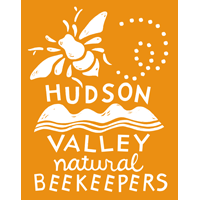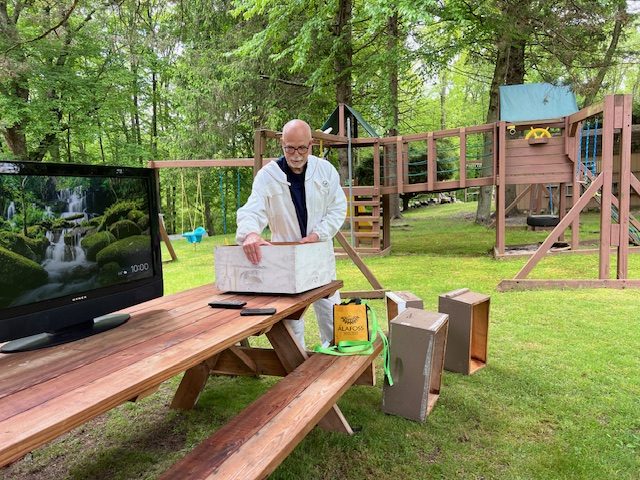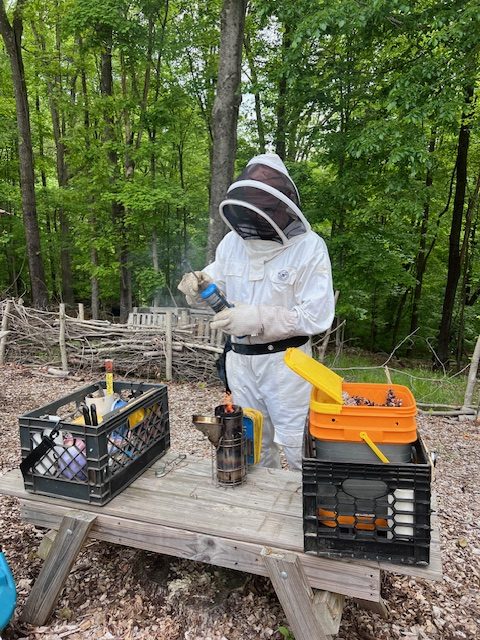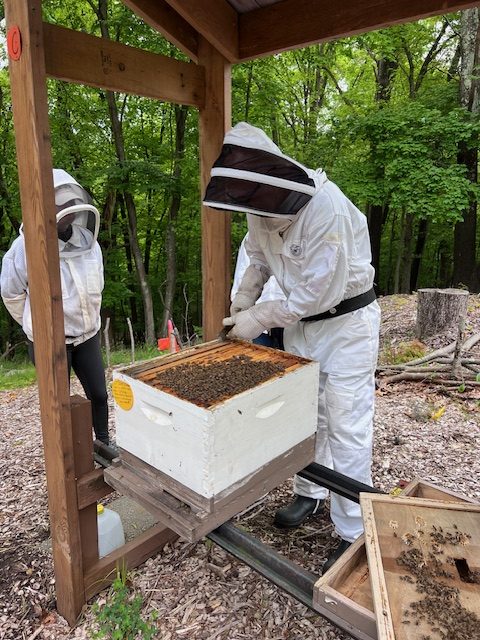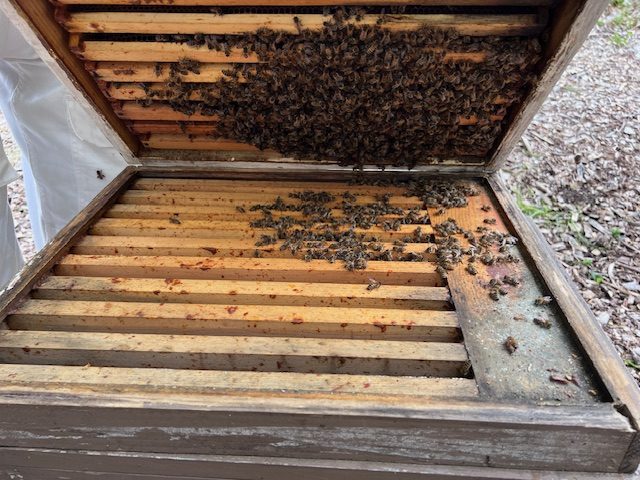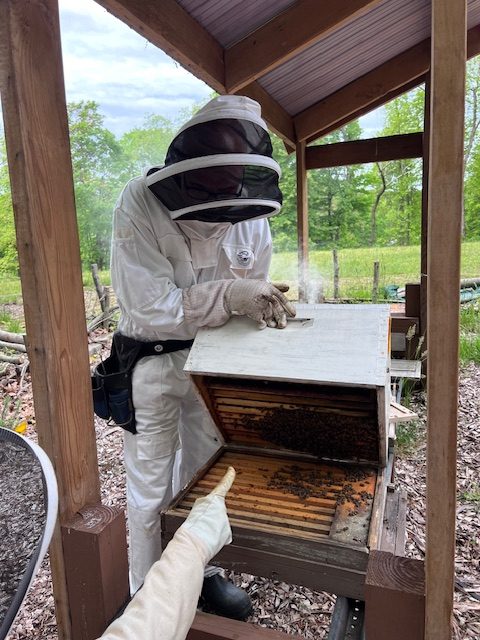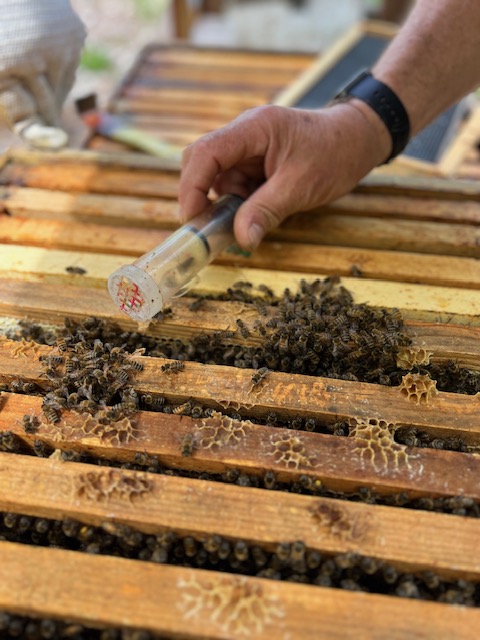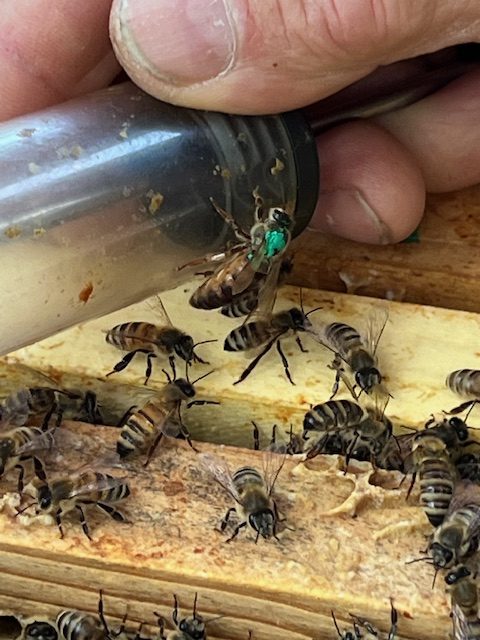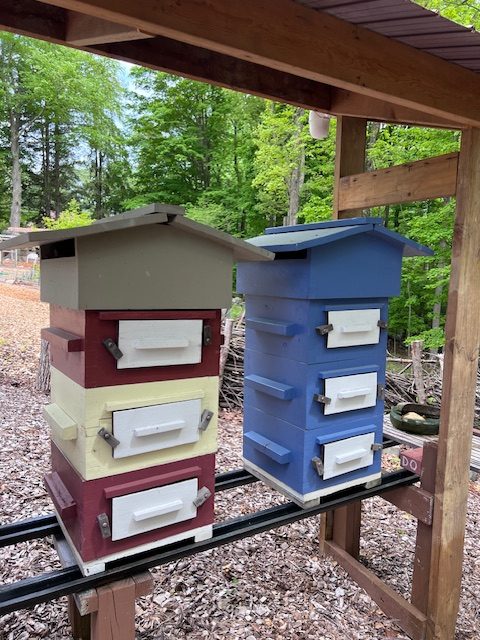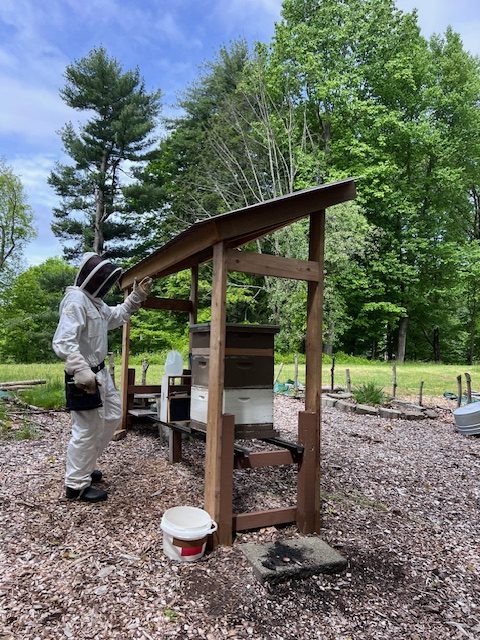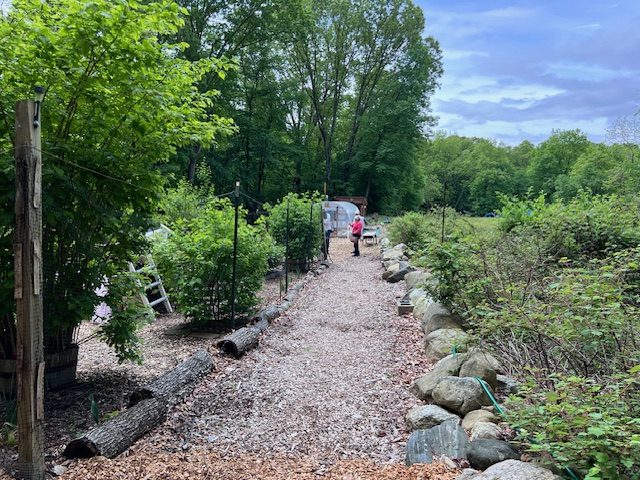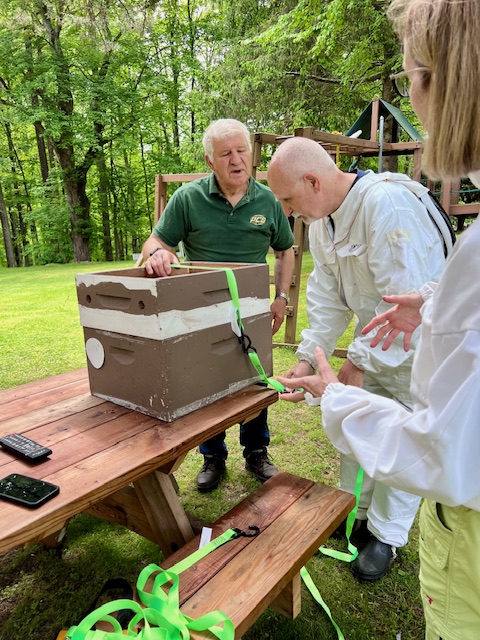Eric is our beekeeping pro and there is almost no tool he doesn’t have. He invited us to see how he extracts honey. This is an example of a more convenient way to harvest honey, especially if you have a lot of hives to take care of.
How to remove bees from honeycombs?
There are some tricks that beekeepers can use to remove bees from their honey supers, such as working with a fume board, but be very careful and read the instructions to avoid a nasty surprise with your honey. Eric sprayed a liquid bee repellent on the felt inside the board. The bees do not like the smell and most of them would leave the hive within 10 minutes.
There are also several bee escapes (diamond, triangle) that you can buy or quickly build yourself that will empty the honey supers over night.
How do I uncap the honeycomb?
Eric runs his frames through an uncapping machine that works really fast with little impact on the structure. You won’t have a lot of wax with this method. If you just have a few hives, the uncapping knife and a uncapping fork will work great.
Honey extraction
Eric actually used an electric extractor for 9 medium frames. It has about 16 speeds. Independent from manual or electric, take a few minutes to build up speed. Eric prefers plastic as wax foundation tends to burst at top speed. He would let the extractor run for 10 minutes, slow it down to a stop then reverse the spin direction for a few minutes more. Depending on the balance, top speed is not always required. With wax foundation, he’d never go top speed.
Check the tank from time to time as the honey may rise to the point where the frames are in the honey. Before this happens, it is advisable to drain the honey for the next spin.
